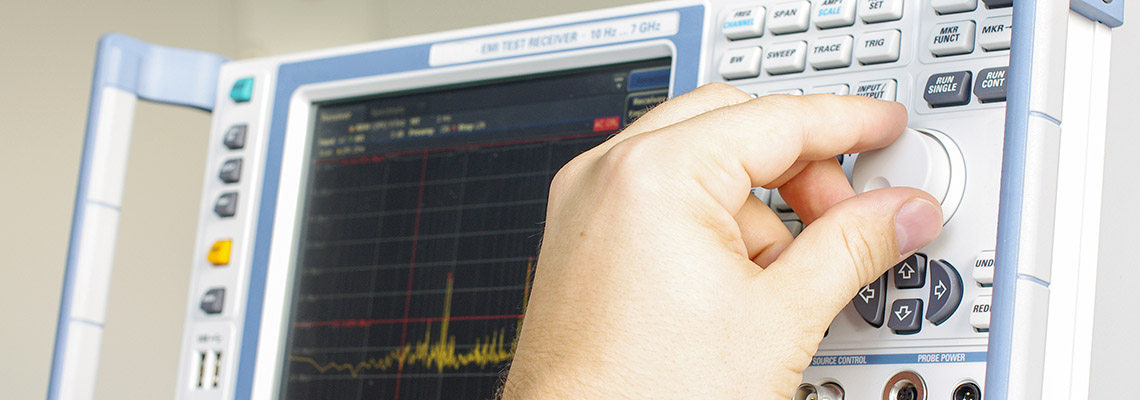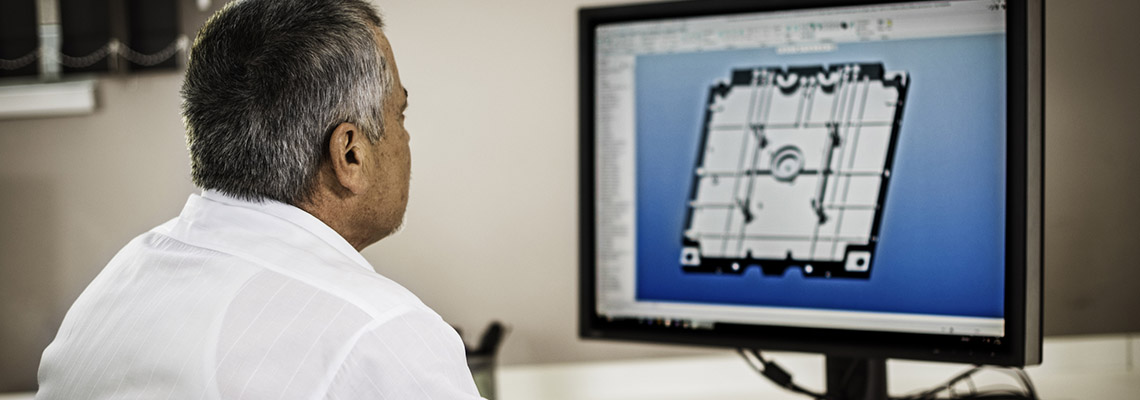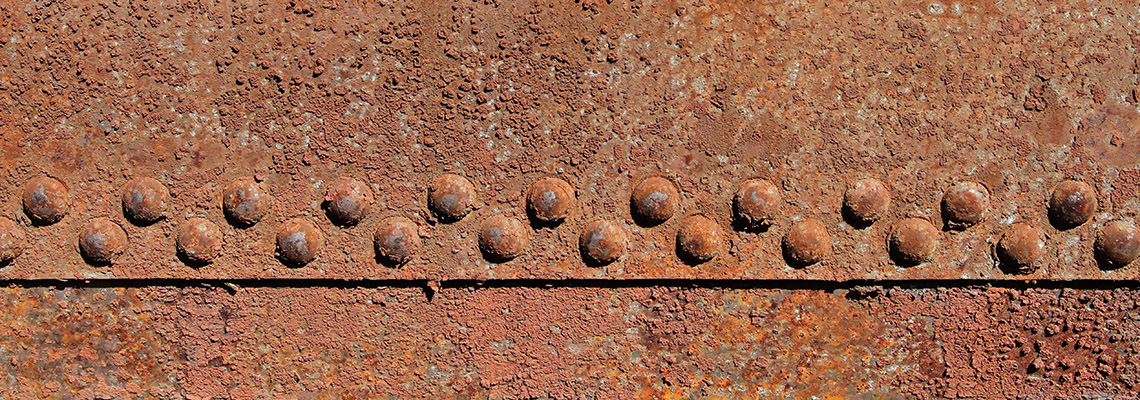Comprehensive Glossary of Common Terms in EMI Shielding
Bookmark this page. We know, probably better than anyone, just how vast and complex the EMI shielding industry can be to understand. To help you navigate, we've updated our extensive collection of glossary terms to nearly 100, with new definitions spanning from absorption loss to thermal conductivity -- and everything in between.
A
Ambient Electromagnetic Environment: That electromagnetic field level existing in an area
and emanating from sources other than the system under test.
Attenuation: A
reduction in energy. Attenuation occurs naturally during wave travel through
transmission lines, waveguides, space or a medium such as water, or may be
produced intentionally by inserting an attenuator in a circuit or a shielding
absorbing device in the path of radiation. The degree of attenuation is
expressed in decibels or decibels per unit length.
Attenuator: An
arrangement of fixed and/or variable resistive elements used to attenuate a
signal by a desired amount.
C
Cross Coupling: Coupling of the signal from
one channel to another where it becomes an undesired signal.
Conductivity:
Capability of a material to conduct electrical currents.
D
Decibel (dB): A convenient method for expressing
voltage or power ratios in logarithmic terms.
Degradation: An
undesired change in the operational performance of a test specimen. Degradation
of the operation of a test specimen does not necessarily mean malfunction.
Dielectric Loss Tangent: This quantifies a materials inherent dissipation of
electromagnetic energy to heat. The
dielectric loss tangent is defined by the angle between the capacitors
impedance vector and the negative reactive axis.
E
Electromagnetic Compatibility (EMC): A measure of an equipment’s ability to neither radiate nor
conduct electromagnetic energy, or to be susceptible to such energy from other
equipment or an external electromagnetic environment.
Electromagnetic Interference (EMI): Undesired conducted or radiated electrical disturbances,
including transients, which can interfere with the operation of electrical or
electronic equipment. These disturbances can occur anywhere in the
electromagnetic spectrum.
Emanation:
Undesired electromagnetic energy radiated or conducted from a system.
Electromagnetic Waves: Electromagnetic waves come in
three forms – Magnetic, Electric and Plane Wave as follows
Magnetic Field or
H-Field: An induction field caused predominantly by a current source. Also
called a low impedance source, such as may be generated by a loop antenna.
Electrical or
E-Field: A field induced by a high impedance source, such as a short
dipole.
Plane Wave: An electromagnetic wave which
exists at a distance greater than a wavelength from the source, where the
impedance of the wave is nearly equal to the impedance of free space – 377
ohms.
Electromagnetic Pulse: A short burst of high
electromagnetic energy

G
Gasket-EMI: A material that is inserted between mating surfaces of an electronic enclosure to provide low resistance across the seam and thereby preserve current continuity of the enclosure.
Ground: A
reference plane common to all electronic, electrical, electromechanical systems
and connected to earth by means of a ground rod, ground grid, or other similar
means.
H
Hertz: An
international designation for cycles per second (cps).
I
Insertion Loss: Measure of improvement in a seam,
joint or shield by the addition of a conductive gasket. Usually stated in dB.
Interference: Any
electromagnetic phenomenon, signal or emission, man-made or natural, which
causes or can cause an undesired response, malfunctioning or degradation of
performance of electrical or electronic equipment.
Immunity: The
ability of a device or equipment to resist malfunctioning when exposed to
external electromagnetic interference.
Impedance: The
measure of the opposition that a circuit (seem interface) presents to a current
when a voltage is applied.
M
Malfunction: A
change in the equipment’s normal characteristics which effectively destroys
proper operation.
N
NRL Arch: The Naval Research Laboratory
(NRL) developed test method for reflectivity of flat absorber materials
P
Permeability: The
capability of a material to be magnetized at a given rate. It is a non-linear
property of both the magnetic flux density and the frequency of wave
propagation.
Permittivity: The
ability of a substance to store electrical energy in an electric field.
R
Radio Frequency (RF): Any frequency at which coherent electromagnetic radiation of
energy is possible. Generally considered to be any frequency above 10 kHz.

Radio Frequency Interference (RFI): Used
interchangeably with EMI. EMI is a later definition which includes the entire
electromagnetic spectrum, whereas RFI is more restricted to the radio frequency
band, generally considered to be between the limits 10 kHz to 10 GHz.
Reflection Loss: Attenuation of the
electromagnetic wave or energy caused by impedance mismatch between the wave in
air and the wave in metal
Relative Conductivity: Conductivity of the
shield material relative to the conductivity of copper.
Relative Permeability: Magnetic permeability of
the shield material relative to the permeability of free space.
S
Shield: A
metallic configuration inserted between a source and the desired area of
protection which has the capability to reduce the energy level of a radiating
electromagnetic field by reflecting and absorbing the energy contained in the
field.
Shielding Effectiveness: A measure of the
reduction or attenuation in electromagnetic field strength at a point in space
caused by the insertion of a shield between the source and that point. Usually
stated in dB.
Shielding Increase: The difference of an
electromagnetic field amplitude emanating through a seam (measured under fixed
test conditions) with and without the gasket in the seam, with the force
joining the seam remaining constant. The difference is expressed in dB based on
voltage measurements.
Skin Depth: Distance which a plane wave must
travel through a shield to be attenuated 1/e, or approximately 37 percent of
its original value. It is a function of the shield’s conductivity and permeability
and the wave’s frequency.
Skin Effect: Increase in shield resistance
with frequency because of crowding of current near the shield surface because
of rapid attenuation of current as a function of depth from the shield surface.
Surface Treatment: Coating or plating of mating
surfaces of a junction.
Susceptibility:
Measure of the degradation of performance of a system when exposed to an
electromagnetic environment.
Shielding Effectiveness: The difference of an
electromagnetic amplitude emanating from a source within an enclosure, and that
from a source in free space. The difference is expressed in dB based on voltage
measurements.
V
Volume Resistivity: A resistance measurement
which takes sample thickness into account.
Units of measurement are typically ohm-cm.
W
Wave Impedance: The ratio of electric field
intensity to magnetic field intensity.
Wavelength: The
wavelength of a sinusoidal wave is the spatial period of the wave – the
distance over which the wave’s shape repeats.

MECHANICAL
A
Abrasion Resistance: The resistance of a
material to wearing away by contact with a moving abrasive surface. Usefulness
of standard tests very limited. Abrasion resistance is a complex of properties:
resilience, stiffness, thermal stability, resistance to cutting and tearing.
C
Cold Flow: Continued deformation under
stress.
Compression Set: The decrease in height of a
specimen which has been deformed under specific conditions of load, time, and
temperature. Normally expressed as a percentage of the initial deflection
(rather than as a percentage of the initial height).
Compression Strength: The capacity of a material or
structure to withstand loads tending to reduce size.
Compression Modulus: The mechanical property of
linear elastic solid materials where you measure the force that is needed to
stretch a material sample.
Conversion Coating: A protective surface layer on
a metal that is created by a chemical reaction between the metal and a chemical
solution typically applied in accordance with MIL-DTL-5541. Type 1 Conversion Coating is Hexavalent CR3
Type. Type 2 Conversion Coating is
Trivalent CR6 Type.
CBRN: Chemical,
Biological, Radiological and Nuclear exposure.
Current term for NBC.
CVCM: Collected
Volatile Condensable Materials – A measurement of Outgassing.
D
Durometer: An
instrument for measuring the hardness of rubber. Measures the resistance to the
penetration of an indentor point into the surface of the rubber.
Density: The
relationship between the mass of a substance and how much space it takes up
(volume).
E
Elasticity: The
property of an article which tends to return to its original shape after
deformation.
Elastic Limit: The greatest stress which a
material can develop without a permanent deformation remaining after complete
release of the stress. Usually this term is replaced by various load limits for
specific cases in which the resulting permanent deformations are not zero but
are negligible.
Elastomer: A
general term for elastic, rubber-like substances.
Elongation:
Increase in length expressed numerically as a fraction or percentage of initial
length.
EPDM: Ethylene
Propylene Diene M-Class Synthetic Rubber used for gaskets in harsh environments
– NBC Military applications.
F
Fatigue Strength: The amplitude or range of
cyclic stress that can be applied to a material without causing fatigue failure
– endurance limit.
Ferrex: Tin
plated, copper clad stainless steel wire.
Flammability Rating:
The classification of plastics according to how they burn in various
orientations and thicknesses. The
standard for Safety of Flammability is UL-94 published by Underwriters
Laboratory.
Flexural Strength:
Known as the modulus of rupture, bend strength or rupture strength. The stress in a material just before it
yields in a flexure test.
Flexural Modulus:
The ratio of stress to strain in flexural deformation or the tendency of a
material to bend.
Fluorosilicone: A
silicone polymer chain with fluorinated side-chains for improved oil and fuel
resistance.
FEA: Finite
Element Analysis (FEA) – Mechanical modeling software. Mechanical displacement formulations method
to calculate component displacements, strains and stresses under internal and
external loads.
G
Galvanic Corrosion: The process by which
dissimilar metals in contact with each other oxidize or corrode. Must have dissimilar metals, electrical
conductivity between them and the conductive path must allow the metal ions to
move from the anodic to cathodic metal.

Galvanic Compatibility: Dissimilar metals that
corrode little or none in a corrosive environment.
Gravimetric Weight
Loss: The loss in metal created by corrosion when two dissimilar metals are
in contact in a corrosive environment.
H
Hardness:
Relative resistance of rubber surface to indentation by an indentor of specific
dimensions under a specified load. (See Durometer). Numerical hardness values
represent either depth of penetration or convenient arbitrary units derived
from depth of penetration. Devices for measuring rubber hardness are known as
durometers and plastometers. Durometers are used most commonly. The higher the durometer number, the harder
the rubber, and vice versa.
Hardness Shore A: Durometer reading in degrees of hardness using a Type A Shore
durometer. (Shore A hardness of 35 is soft; 90 is hard).
HDT: Heat
Deflection Temperature (HDT) – is the temperature at which a polymer of plastic
sample deforms under a specific load.
Hygroscopic: The
ability of a substance to attract and hold water molecules from the surrounding
environment. Also termed “wick”.
I
Izod Impact: The kinetic energy needed to
initiate fracture and continue the fracture until the specimen is broken.
L
LOI - Limited
Oxygen Index: Is the minimum concentration of oxygen, expressed as a
percentage, that will support combustion of a polymer.
M
Modulus of Elasticity: The ratio of the stress
applied to a body or substance to the resulting strain within the elastic
limit.
Monel: A family
of alloys primarily composed of nickel and copper with small amounts of Iron,
Manganese, Carbon and Silicone.
N
NBC: Nuclear,
Biological, and Chemical exposure.
O
Outgassing: The
release of gas that was dissolved, trapped, frozen or absorbed in a material.
P
Permeability: A
measure of the ease with which a liquid or gas can pass through a material.
Permanent Set, Stress
and Strain Relaxation: Permanent Set is defined as the amount of residual
displacement in a rubber part after the distorting load has been removed.
Stress Relaxation, or Creep, is a gradual increase in deformation of an
elastomer under constant load with the passage of time, accompanied by a
corresponding reduction in stress level.
R
Resilience: The
ratio of energy given up on recovery from deformation to the energy required to
produce the deformation – usually expressed in percent.
RoHs Compliant: The Restriction of Hazardous Substances. European Directive 2002/95/EC restricts the use of specific hazardous materials found in electrical and electronic products.
S
SAE: Society of
Automotive Engineers maintain committees to develop EMI gasket test standards.
Shear Modulus: The coefficient of elasticity
for a shearing or torsion force.
Surface Treatment: Coating, plating or
conversions coating of mating surfaces of a junction.
Specific Gravity: The ratio of the density of a
substance to the density of a reference substance; equivalency.
T
Tear Strength: The force per unit of
thickness required to initiate tearing in a direction normal to the direction
of the stress.
Tensile Set: The residual elongation of a test
sample after being stretched and allowed to relax in a specific manner.
Tensile Strength and Elongation: Tensile
Strength is the force per unit of the original cross sectional area which is
applied at the time of the rupture of the specimen during tensile stress.
Elongation is defined as the extension between benchmarks produced by a tensile
force applied to a specimen, and is expressed as a percentage of the original
distance between the marks. Ultimate elongation is the elongation at the moment
of rupture. Tensile Stress, more commonly called “modulus,” is the stress
required to produce a certain elongation.
TML: Total Mass
Loss – A measurement of outgassing – loss of weight.
Thermal Conductivity: The property of a
material to conduct heat.

